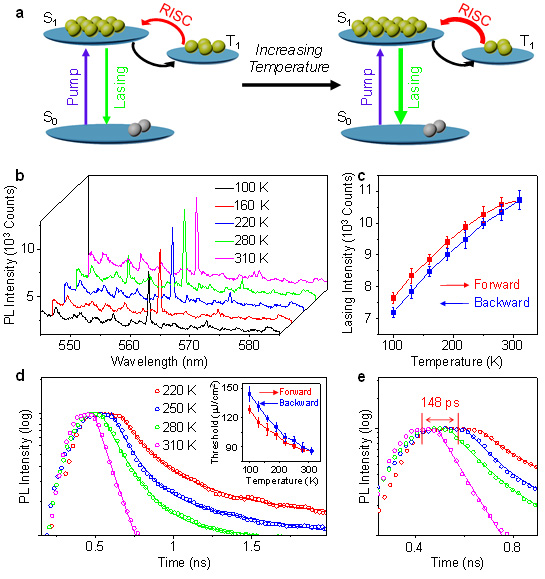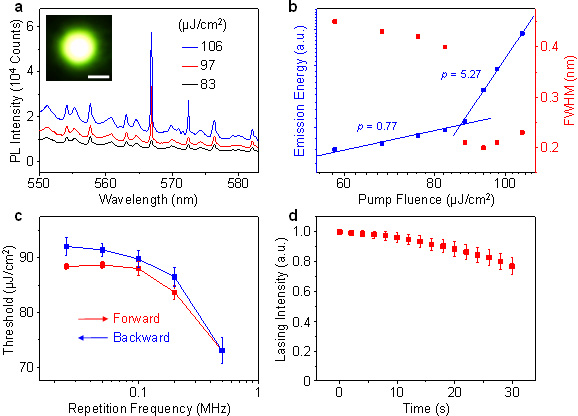Researchers realize highly efficient triplet-boosted organic solid-state lasers
Benefiting from the high optical gain, easy processability and mechanical flexibility of organic semiconductors, organic solid-state lasers (OSSLs) based on these materials have shown great potential in various applications, such as biochemical sensing, optical communications and laser displays. Nevertheless, the realization of electrically pumped organic lasers, which is crucial for the practical applications of OSSLs, has not yet met with success. The main stumbling blocks behind this challenge are the polaron losses related to unbalanced carrier mobility, absorption losses and singlet annihilations caused by triplet accumulations.
A research group from Institute of Chemistry, Chinese Academy of Sciences (ICCAS), led by Prof. ZHAO Yong Sheng, has been focusing on the theorical investigation (Acc. Chem. Res. 2016, 49, 1691-1700) and application development (Nat. Commun. 2019, 10, 870) of OSSLs for several years. They have constructed charge-transfer complexes with balanced carrier mobility and high optical gain (Sci. Adv. 2019, 5, eaaw2953), which provides a valuable guidance for the rational design of high performance organic optoelectronic materials to deal with polaron losses. In fact, the most difficult impediment towards organic laser diodes is the optical losses related to triplet excitons, which is generally suppressed by triplet quenchers. If the excited energy of triplet excitons can be harvested for lasing, not only the optical losses caused by triplets can be diminished but also the efficiency of OSSLs can be greatly improved.
Recently, these researchers developed an approach to overcome the triplet losses based on the reverse intersystem crossing (RISC) process in organic thermally activated delayed fluorescence (TADF) materials. By introducing TADF molecules with high RISC efficiency and optical gain into high-quality microcavities, they observed a novel thermally activated lasing process for the first time (Figure 1), which was attributed to the involvement of regenerated singlets in population inversion. Moreover, the triplet-harvesting RISC process is considered to overcome the triplet losses under successive excitation, which is the main stumbling block to achieve organic continuous-wave lasers. Accordingly, quasi-continuous-wave lasing was further realized based on this process (Figure 2), showing a real advantage of using the TADF compound towards organic continuous-wave lasers.
The paper entitle "Experimentally Observed Reverse Intersystem Crossing-Boosted Lasing" was published in Angew. Chem. Int. Ed.2020, 59, 21677-21682.
This work was financially supported by the Ministry of Science and Technology of China, Beijing National Laboratory for Molecular Science, the National Natural Science Foundation of China and the Chinese Academy of Sciences.

Figure 1. Thermally activated lasing process in OSSLs (Image by Prof. ZHAO's group)

Figure 2. Quasi-continuous-wave lasing based on thermally activated lasing process (Image by Prof. ZHAO's group)
Contact:
Prof. ZHAO Yong Sheng
Institute of Chemistry, Chinese Academy of Sciences
Email: yszhao@iccas.ac.cn





